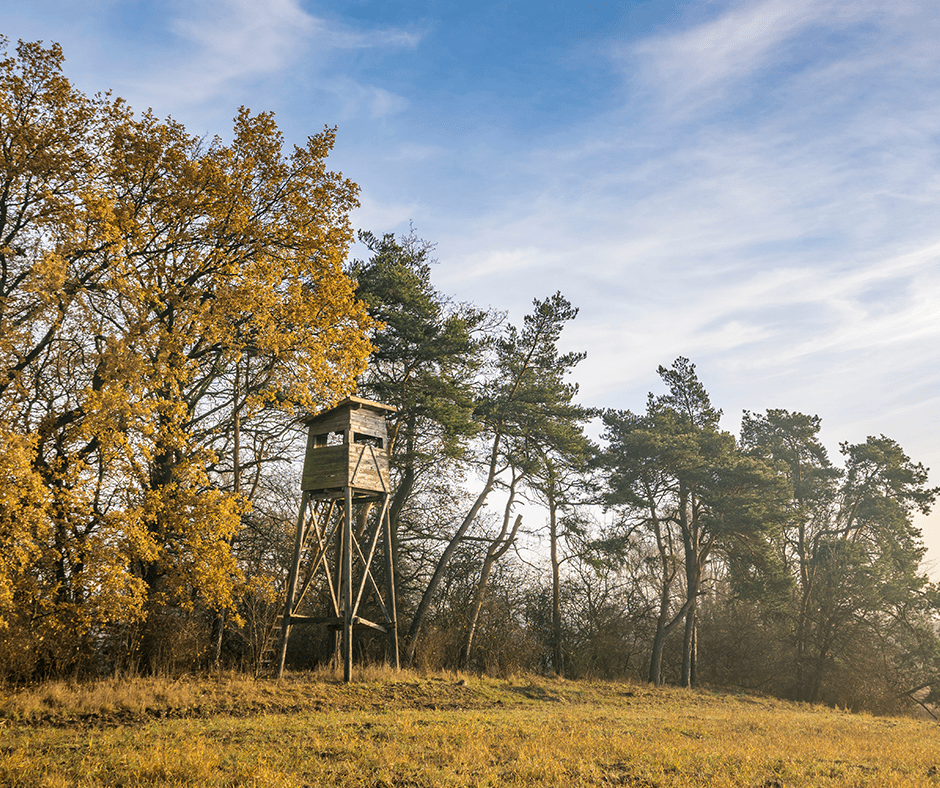We are in the thick of spring and while you may be out turkey hunting you may also be thinking about your fall hunting season and how to improve your food plots, trail cams and most importantly your tree stands. Now is a great time to pull your tree stands down so that you can inspect and repair them if needed. Once it warms up, the thick woods and hot temps can make dragging your stands down treacherous. Then, once the farmers begin to sow seeds and get their crops in the ground, driving your truck right up to them becomes a pipe dream. You will wish this job had been done months ago!
You are probably thinking about how long it took to find the right spot and hang your tree stand perfectly. It is not an easy job to accomplish. The thought of taking it down doesn’t make a lot of sense. So what’s the big deal? Why should you take the time to pull these stands that have produced year after year? 21% of tree stand accidents are related to some sort of structural failure.

Tree stands that are left out year after year are vulnerable to the elements. Trees can grow into the tree stands, ladders can be completely engulfed in briars and poison Ivy. Rodents and other critters can chew most of the way through a strap to make the next time a stand is used the last time it will be used. It takes one bad ice storm to weaken cables creating an actual trap door scenario. Water (frozen or not) and oxygen combine to eat stands on the tree and weaken the structure. Other problems that you will be pulling your tree stands for inspection include:
- Cables and chains that snap
- Bad welds
- Pins that break
- Webbing problems
- Structural support issues
- Platform fractures
- Dangers with waist/safety belts
A stand left in a tree all winter, spring and summer is a weaker stand than it was when you hung it. The only way to prevent this deterioration is to pull your stands and take them home for a good inspection. Pick a nice spring day and give each one of your stands the once over. Checking cables, straps, buckles and even seat cushions. It’s the perfect time to tighten that loose bolt that won’t keep your seat up or maybe even throw a new coat of paint onto an old stand. You can inspect your tree stand for defects, missing parts, weaknesses or excessive wear:
- Listen for any friction points, rubs, or strange noises to make sure there is not any damage or wear. You can lubricate joints, hinges and friction points with graphite powder, vegetable oil, or other odorless oils.
- Tighten all bolts
- Use coarse grips to improve traction on climbing and standing surfaces.
- Get replacement parts if you find damage to ropes, straps, or worn chains
- Rust-proof paint can help minimize some deterioration. You’ll want to apply in advance of the season so that the paint has time to dry and the paint smell to fade.
- Re familiarize yourself with the owner’s manual and all instructions and warnings provided by the manufacturer.
By now most deer hunters that hunt from elevated platforms know what a “lifeline style” rope is and how to use it. Every stand you hang should include this style of rope reaching from above the platform all the way to the ground. These ropes MUST be taken down every year to avoid weakening them by leaving them in the UV light, wind and rain. Not to mention the chance of them being chewed on by every rodent in or around your tree.
We understand the reluctance of pulling your tree stands for inspection, only to rehang them in a few months. We all have favorite spots to hang our tree stands and to sit in during your hunt. There is no reason we can’t hang that stand in the exact same tree and in the same position. It just makes too much sense to do it after a thorough inspection to make sure you and your hunting partners are as safe as possible.
Truthfully, most of us have thought about hanging “that” stand somewhere else and just never take the time to do it. So, before that field gets planted or the bugs take over or turkey season is over…Yank that stand down, give it a good look and then put your new plan in place later in the summer when it’s time to hang it again.
As always, wear your safety harness whenever you are climbing or sitting in a tree and be safe!
Another safety precaution that you’ll also want to be aware of is your ground blinds. Leaving your blinds out can help animals get used to it in their surroundings. However, you’ll want to inspect the blinds before you use them for the season. Permanent ground blinds can become a home for unwanted visitors between hunting seasons, including wasps, spiders, snakes and fire ants, just to name a few. Stepping into a dark blind on opening day without first having examined its condition can result in a very unpleasant hunting experience.
These helpful tips will prepare you to have a safe and enjoyable hunting season. Taking the time to make sure your equipment is prepared will save you the hassle of dealing with accidents during your hunt!



Leave A Comment